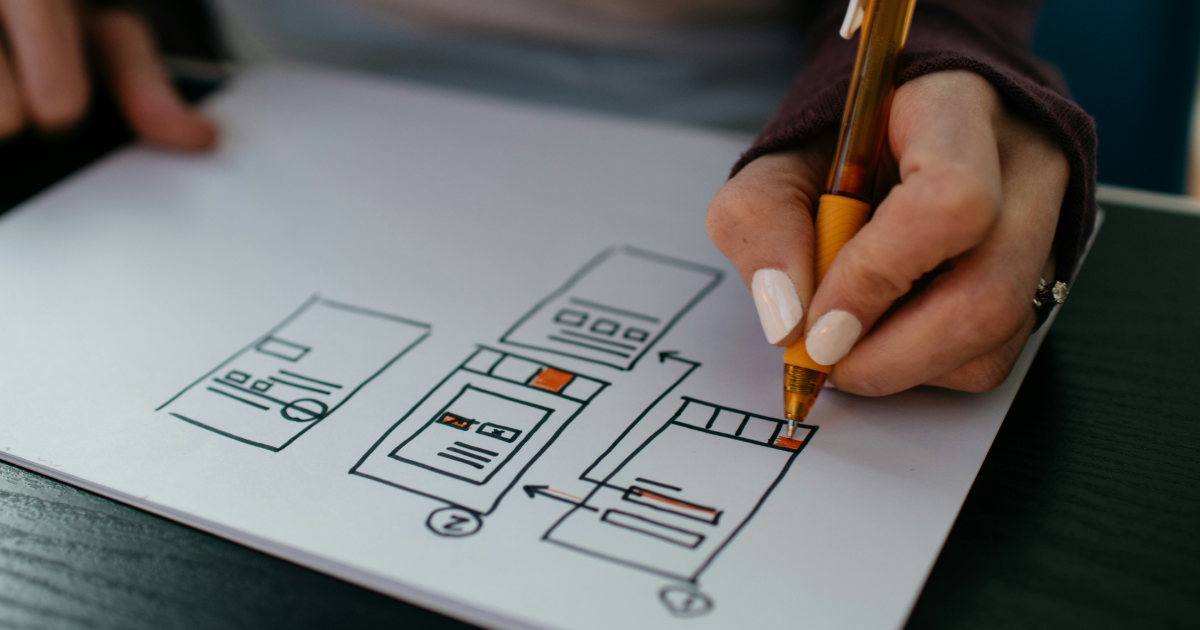
Machine learning vs AI vs NLP: What are the differences?
Jul 10
6 min read
In today's rapidly evolving technological landscape, Artificial Intelligence (AI), Machine Learning (ML), and Natural Language Processing (NLP) are becoming increasingly prevalent. These powerful tools have the potential to transform industries, streamline processes, and enhance our everyday lives. However, it's essential to understand the critical differences between these related, but often conflated, terms. This article will delve into the characteristics of AI, ML, and NLP, summarize their similarities and differences, and examine their transformative impact on healthcare and education.
Artificial intelligence (AI)
Many of us have some concept of what the term "artificial intelligence" represents. However, let’s provide a precise definition of AI to understand it better before we move on to its applications.
Artificial intelligence refers to the development of computer systems that can perform tasks that usually require human intelligence. These tasks include learning, reasoning, problem-solving, perception, and understanding human language. AI can be broadly categorized into two types:
- Narrow AI is designed for specific tasks, such as voice recognition on your smartphone or recommending content on your favorite streaming service. Its usefulness is limited to the specific function(s) for which it was designed.
- General AI is still a largely aspirational technology. It refers to machines that can perform any intellectual task that a human being can do, exhibiting human-like cognitive abilities.
What is machine learning (ML)?
Often considered a subset of AI, machine learning (ML) involves the creation of algorithms that allow computers to learn from and make decisions or predictions based on data. Instead of programming explicit rules for the computer to follow, ML models identify patterns and relationships in the data, allowing them to improve their performance over time.
There are three main types of machine learning:
- Supervised Learning - An ML model that is trained on a labeled dataset, where input-output pairs are provided. The model learns the relationship between inputs and outputs and can make predictions about novel, unpaired data points.
- Unsupervised Learning - An ML model that is given an unlabeled dataset and instructed to identify patterns or structures in the data without guidance. This process can involve tasks such as clustering or dimensionality reduction.
- Reinforcement Learning - An ML model that learns through trial and error, receiving feedback through rewards or penalties. Reinforcement learning models are often used for robotics and gaming applications.
What is Natural Language Processing (NLP)?
Natural language processing (NLP) is a subfield of computer science and artificial intelligence that focuses on enabling computers to comprehend and interpret written and spoken human language.
NLP unites rule-based computational linguistics with statistical, machine learning, and deep learning approaches, allowing computers to analyze and interpret text or voice data, including intention and sentiment. This technology powers applications like language translation, voice-command systems, text summarization, and customer service chatbots, which have become integral to everyday life.
Additionally, enterprise solutions increasingly utilize NLP to optimize business operations, enhance employee efficiency, and streamline crucial processes.
The Differences Between AI, ML, and NLP
While AI, ML, and NLP are related concepts, it’s important to understand the fundamental differences that distinguish them from one another.
Artificial intelligence (AI) is the broadest, most inclusive technology category of the three, encompassing the idea of creating machines capable of performing tasks that typically require human intelligence. Both ML and NLP fall under the AI umbrella.
Machine learning (ML) is a specific approach to AI that involves developing algorithms that learn from data. It's the driving force behind numerous AI applications, but it's not the only approach.
Natural language processing (NLP) sits at the intersection of AI and human language, aiming to develop systems that can understand, interpret, and generate language. It's a specialized area within AI that frequently leverages ML techniques to accomplish its objectives.
Overall, AI, ML, and NLP are interconnected yet distinct technologies, each with unique goals and applications. Understanding the differences between these concepts will empower you to make informed software product decisions when navigating the ever-evolving landscape of these technologies.
AI, ML, and NLP: Transforming healthcare and education for a brighter future
The impact of artificial intelligence (AI), machine learning (ML), and natural language processing (NLP) extends far beyond our daily lives. These revolutionary technologies have also made significant strides in healthcare and education, changing how we approach well-being and learning. Let’s discuss AI, ML, and NLP's profound influences on these two critical sectors.

The Power of AI, ML, and NLP in Healthcare
The healthcare industry has benefited tremendously from advancements in AI, ML, and NLP technologies. Here's are a few ways each technology is shaping the future of healthcare:
Artificial Intelligence (AI)
AI has paved the way for medical diagnosis, treatment, and patient care advancements. Some notable applications include:
- Assisting physicians in diagnosing diseases more accurately and quickly, enabling timely interventions and better patient outcomes.
- Enhancing precision with robot-assisted surgeries can reduce procedure complications and faster recovery times.
- Personalizing treatment plans by leveraging AI algorithms that analyze patient data and predict the most effective therapies based on individual characteristics.
Machine Learning (ML)
ML has transformed healthcare by analyzing vast amounts of data and identifying patterns to improve patient care. Applications include:
- Developing predictive models to identify patients at risk for specific conditions, allowing for early intervention and prevention measures.
- Uncovering novel drug candidates or optimizing drug dosage through ML algorithms that analyze complex biomedical data.
- Enhancing medical imaging interpretation by training ML models on large datasets to identify anomalies and assist radiologists in diagnosing conditions.
Natural Language Processing (NLP)
NLP is streamlining healthcare processes by analyzing and extracting valuable insights from unstructured textual data. Some examples of its applications include:
- Extracting relevant information from electronic health records (EHRs), improving patient care and supporting clinical decision-making.
- Automating the coding of medical records for billing and insurance purposes, reducing administrative burden and minimizing errors.
- Analyzing patient feedback and sentiment to identify areas for improvement in healthcare services and facilities.
- Reducing provider documentation burden with ambient listening and auto transcription during patient consultations.

Revolutionizing Education with AI, ML, and NLP
AI, ML, and NLP are also fostering significant improvements in the education sector, providing innovative solutions and enhancing learning experiences.
Artificial Intelligence (AI)
AI has ushered in a new era of personalized and adaptive learning tools, with applications such as:
- Customizing instructional models by identifying individual strengths, weaknesses, and learning styles and adjusting content and pacing accordingly.
- Providing real-time feedback to students and educators, enabling continuous improvement and support.
- Utilizing AI-powered tools to streamline administrative tasks, such as grading and scheduling, giving educators more time to focus on teaching and mentoring.
Machine Learning (ML)
ML has the potential to revolutionize the ways we learn and evaluate educational outcomes. Some notable applications include:
- Predicting student performance by analyzing historical data, enabling early interventions, and providing tailored support.
- Identifying gaps in curricula or instructional materials by analyzing patterns in student performance data, informing opportunities to improve content and delivery.
- Recommending personalized learning resources, such as articles, videos, and quizzes, based on individual interests and needs.
Natural Language Processing (NLP)
NLP has enhanced communication and collaboration in educational settings with applications such as:
- Developing intelligent tutoring systems that can understand and respond to natural language input, providing personalized guidance and feedback.
- Supporting multi-language education through machine translation tools, breaking down language barriers, and promoting cross-cultural understanding.
- Analyzing student writing for grammar, style, and plagiarism and providing targeted feedback.

Key takeaways
Artificial intelligence (AI), machine learning (ML), and natural language processing (NLP) technologies will play a massive role in shaping the futures of health, education, and many other sectors. While these terms are often used imprecisely and interchangeably, they are all distinct yet interconnected concepts with unique goals and applications. By grasping their nuances, we can better appreciate their transformative impact on various industries, including healthcare and education.
The integration of AI, ML, and NLP has already begun to revolutionize healthcare by enabling faster and more accurate diagnoses, personalized treatments, and streamlined processes. Similarly, in education, these technologies have ushered in a new era of personalized learning, real-time feedback, and enhanced communication and collaboration.
As these technologies continue to evolve and mature, we can expect their impact to become even more profound. Ultimately, understanding the differences and applications of AI, ML, and NLP is essential to leveraging their benefits and shaping a better world.
Mike Biglan
Founder and CEO Mike Biglan has led the creation of transformative digital products adopted by millions of users–including digital therapeutics, AI-powered RPM platforms, an X-Prize-winning adult literacy intervention, and more. Mike also led the creation of Marco Polo, an acclaimed consumer-facing video messaging/streaming app with tens of millions of downloads.
by this author




